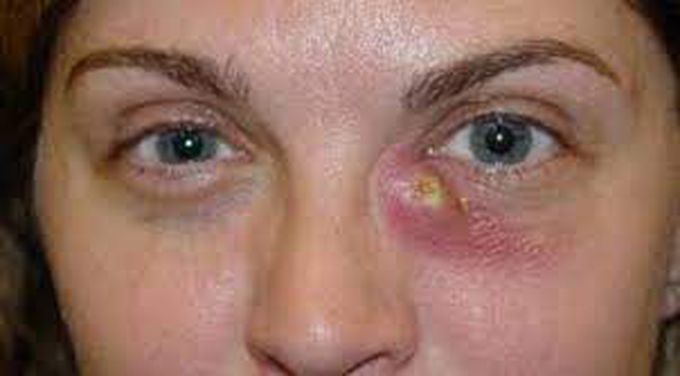


Treatment of dacryocystitis
The treatment for dacryocystitis depends on the underlying cause of the illness. The most common treatment of acute dacryocystitis involves oral antibiotics, such as cephalexin, amoxicillin-clavulanate, and ciprofloxacin for 7-10 days to eradicate the underlying bacterial infection. In very mild cases or for small flare ups, antibiotic eye drops or ointments may be considered. However, in more severe cases involving fever or spreading infection, intravenous antibiotics, such as ceftriaxone and ciprofloxacin, may be used. The choice of initial antibiotic therapy depends on age, severity of infection, and the presence of any complications. A sample of the eye discharge may be taken and sent to the lab to determine if any pathogens are causing an infection. Depending on these results, antibiotic therapy may be adjusted. Once the infection is resolved, a surgical procedure called a dacryocystorhinostomy (DCR) may be required to bypass the blockage in the lacrimal system, allow tears to drain directly from the lacrimal sac into the nose, and prevent recurrent infections. DCR is also the main treatment for chronic dacryocystitis. In both acute and chronic dacryocystitis, crigler massages may be attempted and warm compresses may be applied a few times daily to the affected eye(s) to relieve pain and swelling. If not treated promptly, particularly in newborns, the infection may spread, causing orbital cellulitis, which is an infection of the soft tissues and fat that hold the eye in its socket, alongside brain and spinal cord infections, blood infections, and death.
Xerophthalmia
Acute Conjunctivitis (Pink Eye) | Allergic, Bacterial, Viral | Symptoms, Diagnosis, TreatmentWhat causes eye freckles? Are they dangerous?Strabismus: Everything You Need To KnowFATTY DEPOSITS of CHOLESTEROL around EYES | How to get rid of it?-Dr.Rajdeep Mysore|Doctors' CircleGlaucoma

